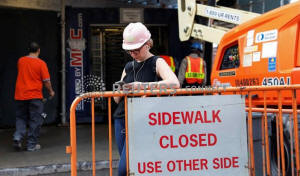America's economy and wages are cooling but not its female workforce
 Send a link to a friend
Send a link to a friend
 [July 06, 2019] By
Jason Lange [July 06, 2019] By
Jason Lange
WASHINGTON (Reuters) - Data released on
Friday showed a return to strong job growth in the United States,
allaying some fears the U.S. economy is on a short path to recession.
But the data also reinforced the view that economic growth is slowing.
Here are five take-aways from a report by the U.S. Labor Department on
U.S. employment during June.
SLOWING GROWTH
Every month the Labor Department surveys payrolls in the private sector
to calculate how many hours employees across the nation worked. Seen as
a proxy for economic growth, this index of the national work effort grew
0.2% in June, a rate near the muted gains clocked in recent months. That
suggests the U.S. economy, which grew at a 3.1% annual rate in the first
quarter of this year, could be cooling.

COOLER WAGE GROWTH?
Growth in private sector average hourly earnings accelerated throughout
2018 and through February of this year, when year-over-year growth hit
the strongest rate since 2009 at 3.4%. June's growth rate, however, was
a more modest 3.1%. It is probably too early to tell if there has been a
break in the upward trend.
[to top of second column] |

A female construction worker stands outside a construction site in
Manhattan, New York, U.S., October 3, 2018. REUTERS/Shannon
Stapleton

WAGE LAGGARDS
The manufacturing sector added 17,000 jobs in June after several months of weak
growth or outright decline. Wage growth in the factory sector, however, has
underperformed the national average. Wage growth has also been lower in the
education and health jobs category tracked by the Labor Department.
LABOR FORCE INCREASE
A bright spot for the U.S. economy over the last few years has been the increase
in the share of the population that either has a job or is looking for one. This
so-called labor force participation rate ticked slightly higher in June, both
for a key demographic of people of prime working age and for the general
population. But the rate for prime-age workers has been mostly falling since
January. This suggests the economy might be running lower on its supply of
people available to work, which could depress future job growth.
WOMEN LEAD
In June, the participation rate fell for men of prime working age, while it rose
for women. This is in line with the trend over the last few years. Indeed, the
share of men who have jobs or are looking for one was slightly lower in June
than it was in January 2017.
(Reporting by Jason Lange; Editing by Dan Grebler)
[© 2019 Thomson Reuters. All rights
reserved.] Copyright 2019 Reuters. All rights reserved. This material may not be published,
broadcast, rewritten or redistributed.
Thompson Reuters is solely responsible for this content. |